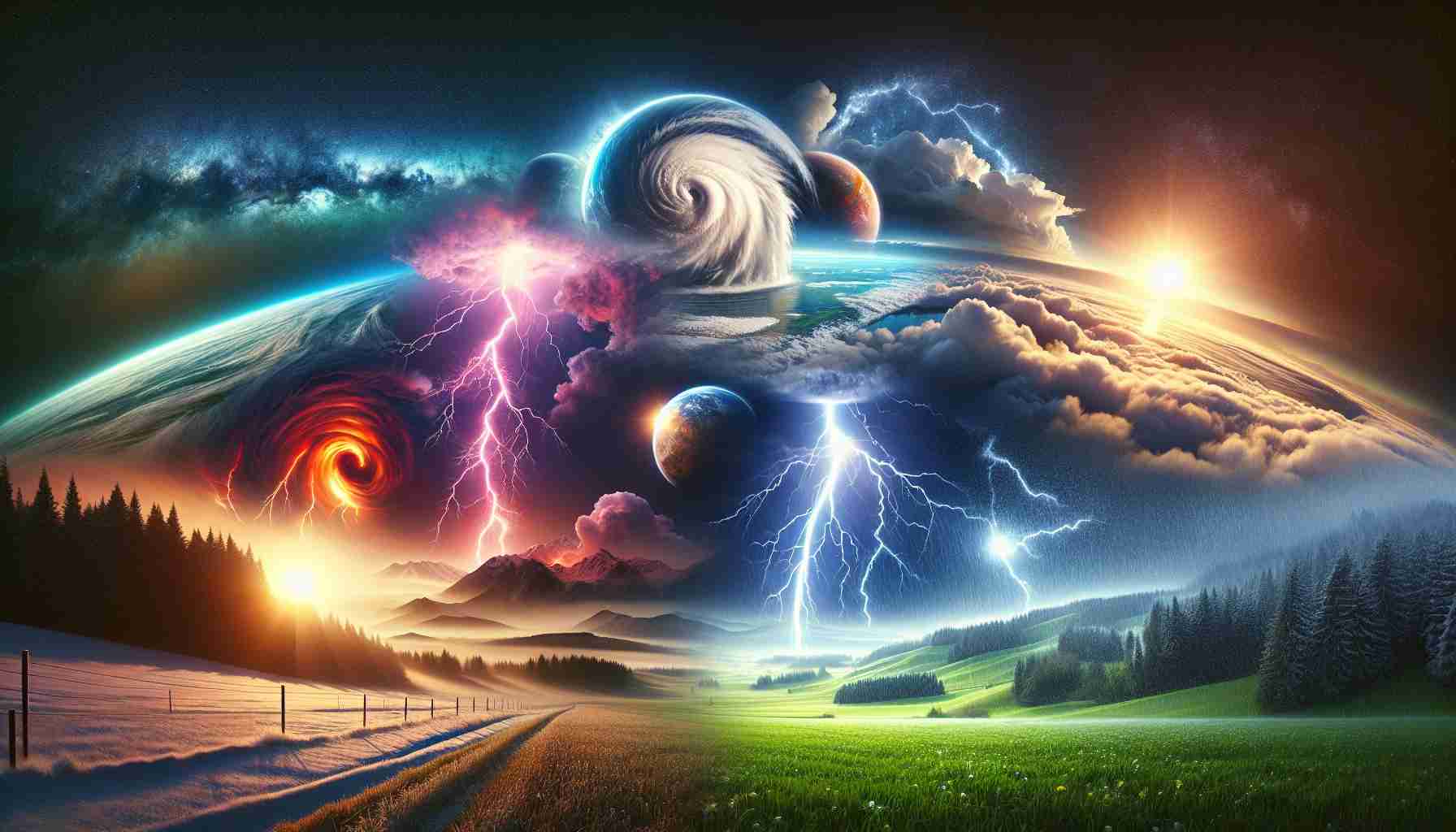The annual Standard Chartered Weather Photographer of the Year Competition offers a profound glimpse into the breathtaking and often tumultuous beauty of Earth’s weather. This year, Gerson Turelly captured the inaugural Standard Chartered Climate Award with his evocative image showcasing the dramatic floods in Porto Alegre, Brazil. In this photo, a kayaker navigates a submerged street, reflecting the increasing frequency of extreme weather events due to climate change.
The Royal Meteorological Society unveiled the winners, handpicked by a panel of esteemed experts in meteorology, photography, and journalism. This year’s submissions came from 84 nations, exemplifying diverse weather phenomena. The society’s chief executive, Liz Bentley, emphasized how the winning photos highlight the interconnected nature of global weather patterns and the pressing need for collective action against climate change.
In another remarkable entry, Wang Xin’s photograph titled “Sprites Dancing in the Dark Night” reveals electrifying red sprites over Shanghai, a rare meteorological occurrence. Meanwhile, Peter Reinold’s smartphone-captured image of a complete circular rainbow during a flight’s descent in Seattle won third place, embodying the spontaneity of photography.
Other notable winners include Lincoln Wheelwright and his portrayal of a thunderstorm’s impending power in Texas, and Andy Gray’s captivating showing of hoar frost in the UK’s Derwent Valley. Ellis Skelton’s panoramic shot of Cuckmere Valley elegantly encapsulates the contrasting essence of two seasons within a singular frame, illustrating the unpredictable yet mesmerizing quality of nature.
These images serve as a powerful reminder of Earth’s dynamic climates and the urgent call to address climate change collectively.
Astonishing Weather Phenomena: How Photography’s Impact Extends Beyond Aesthetics
In a world where weather events are becoming more frequent and intense, we often overlook the profound impact this change has on human lives, communities, and entire nations. While the Standard Chartered Weather Photographer of the Year Competition dazzles us with beautiful imagery, the stories behind these photos shed light on the harsh realities faced across the globe due to shifting climates.
The Human Cost of Beauty
Photographs that capture extreme weather not only bring out their striking visual elements but also hint at the consequences for those who experience them firsthand. In Porto Alegre, Brazil, where Gerson Turelly’s award-winning image was shot, the community has faced repeated devastating floods. These events disrupt lives, displace families, and damage infrastructure, highlighting a critical and sometimes underrepresented aspect of climate change—its impact on everyday people.
Communities on the Frontline
Countries like Brazil are not alone in facing these challenges. From coastal erosion in Bangladesh to severe droughts in sub-Saharan Africa, communities globally are confronting the uncomfortable realities of climate change. As noted by organizations such as the United Nations, these regions often lack the resources to adapt effectively, making international cooperation and support vital.
Weather: An Evolving Identity
Photos like Wang Xin’s ‘Sprites Dancing in the Dark Night’ not only intrigue us but also deepen our understanding of lesser-known meteorological phenomena. Red sprites, though beautiful, can affect radio communications and signal interference, illustrating how even rare events can have unforeseen impacts on technological infrastructure vital for modern life. This furthers the argument for more comprehensive weather studies—a sentiment echoed by networks like the National Geographic.
Technology and Awareness: A Double-Edged Sword
Smartphone technology, as demonstrated by Peter Reinold’s snapshot of a circular rainbow, has democratized photography, increasing awareness by allowing anyone to capture significant meteorological events. This increased volume of shared imagery can broaden public understanding, yet it also raises controversies regarding photo authenticity and the line between artistic representation and scientific documentation.
The Unseen Advantages and Drawbacks
While weather photography competitions inspire awareness and are a catalyst for climate discussions, they also highlight disparities in resource distribution for tackling environmental issues. Developed nations might have the capability to invest in advanced forecasting systems and resilient infrastructure, whereas poorer countries remain vulnerable. The intricate balance of these pros and cons is pondered by think-tanks and environmentalists worldwide, such as the World Resources Institute.
Why Should We Care?
These arresting images force a critical question: Are we doing enough to safeguard future generations from the risks posed by these weather changes? Awareness is essential, but awareness must be matched with action, from individual choices to multinational policies.
As evident from these photographs, the tempestuous beauty of weather is a compelling reminder to address these challenges not just individually, but collectively. By doing so, we have the potential to transform a planet at risk into a universe of thriving habitats.
Consider this: If the everyday person captured the changing climate more regularly, could it prompt greater action? The camera lens, after all, offers a perspective, but it demands that we write the narrative behind it.























